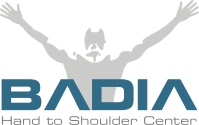Resources For Physicians At Your Fingertips
This Physicians section was created by Dr. Alejandro Badia, M.D, F.A.C.S. for you, the well-established Physicians as well as the Young Physicians who wants to hone their skills!
Whether you are looking for a medical video that teaches or reinforces a specific physicians surgical technique or a scientific article that shows you a new technique for hand arthroscopy or corrective osteotomy after damage of the Distal Radial Physis in children, this is the right place for you.
“New educational programs help medical students hone the skills . But honing surgical skills requires deliberative practice and continuing medical education from the bests physicians in your field. Dr. Badia’s medical articles and videos is helping physicians brush up on their technical skills while solidifying him as an Upper Limb Surgeon expert…"
Hover over each image for more information on visiting fellow physicians
Dr Badia is simply the best in what he does. He is very passionate about patients care and education. No where I have seen that, so much of time and effort is put to create such an awareness amongst the patients. His knowledge and skills are in abundance..Walk into his library and you will see tons of books and international papers that he has published and yet he still looks forward to learn on new products and techniques. No wonder he is a World Renowned Hand Surgeon.
A short rotation, but without a doubt very profitable. Thanks to Dr. Badia and his entire team for the time and effort dedicated to facilitating the learning of other professionals, as well as their own patients. In addition to medical knowledge, I take away with me a great example of an efficient and well-done job, which results in the well-being of the patient. Once again, thank you for everything and hopefully soon I can repeat this experience.
Dr. Badia is fantastic! He is excellent with his patients and takes as much time as necessary with you to answer all of your questions and to get to know you. To him, you're not simply a number! He genuinely cares about his patients! His clinic's staff is very friendly and easygoing, and the overall experience during my time there was excellent. As physicians observing in his program, I not only learned a lot about what it takes to be a wonderful doctor, but I also learned a few things that I will put into practice in the future. If you are searching for a top-notch hand or shoulder surgeon, Dr. Badia is the man for the job!
Dr. Badia: I want to thank you for receiving my son in your clinic. This experience filled him with wisdom and joy. Every day he arrived very happy and convinced that this specialty is what he wants to do in the future. You inspired him to continue with his dream of becoming a doctor. Thank you once again and many blessings to you and your family.

Monday- Friday: 8:30AM- 5:00 PM
Saturday- Sunday: Closed